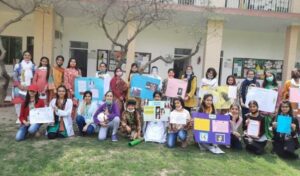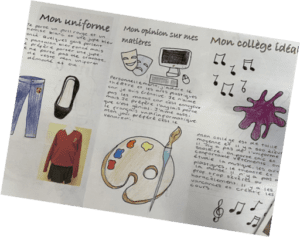 This year, as a school, we felt it is important to foster curiosity about the wider world, which we felt was especially important due to the considerable amount of time spent in lockdown. Specifically, we wanted students to appreciate what unites us globally as citizens and link this to the school’s core values.
This year, as a school, we felt it is important to foster curiosity about the wider world, which we felt was especially important due to the considerable amount of time spent in lockdown. Specifically, we wanted students to appreciate what unites us globally as citizens and link this to the school’s core values.
This academic year, we have undertaken several projects with schools in France, Germany and Pakistan. The links with schools in France and Germany involved exchanging seasonal greeting cards with our partner schools. These cards included details of different cultural traditions and recipes around Christmas and Easter. Mrs Raine said, “The girls have embraced the letter exchanges with France and Germany and it has sparked their enthusiasm for learning languages. There is a real buzz in the classroom when letters or cards arrive. It has been a great way to use our language skills for a real purpose. Along with developing their cultural awareness, reading letters in English has also given our students an insight into what it is like for others to learn English as a foreign language. We hope to continue our links with the different schools and involve more students in the future.”
Additionally, we have worked with the Garrison Academy Girls’ school in Pakistan and exchanged assemblies and pupil work linked to our shared core values. We have focused on being curious, showing compassion and fostering social responsibility. We used both Empathy week and International Women’s Day as vehicles to drive this work. This has highlighted the experiences and challenges for young women in the UK and Pakistan and enhanced cultural understanding. Miss Wignall and the Geography department answered some questions sent by the school about the local areas and customs and in return, Garrison Academy helped us learn more about their country.
Mrs Sharon Hall Deputy Headteacher commented, “By working on the International Schools Award, we have taken the first step on a journey to enhance our students’ understanding of global citizenship. It has enhanced awareness of contrasting customs, promoted curiosity for other cultures and has shown the importance of tolerance and mutual respect. Girls have had the opportunity to make links with four schools across two different continents, gaining a fascinating insight into the wider world in the process.”“




















